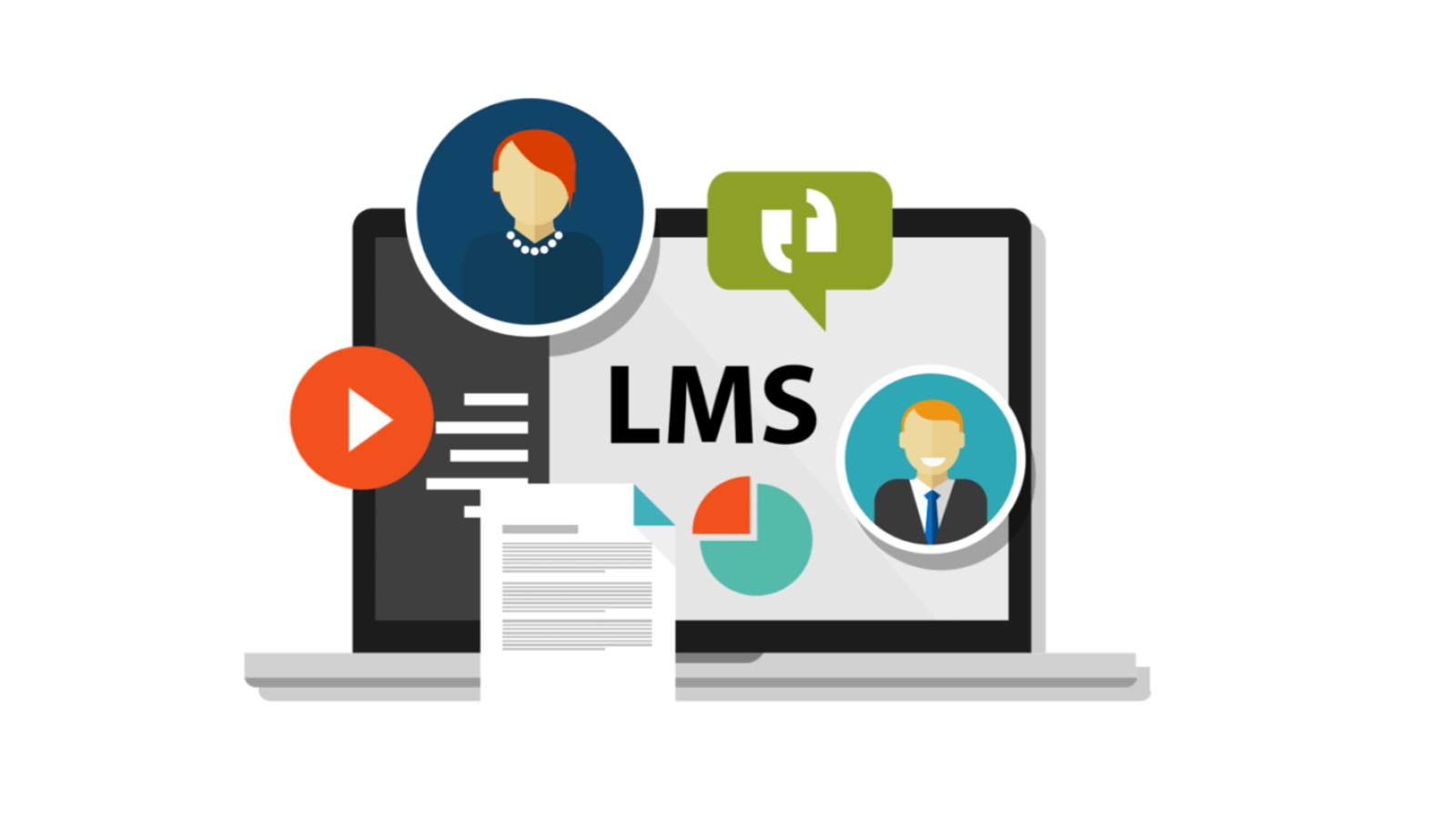If asynchronous learning activities are not provided for employees, several negative consequences can occur.
First, employee productivity may suffer as they struggle to keep up with their work while also trying to learn new material.
This can lead to errors and mistakes being made, which can impact the quality of the work being produced.
Additionally, without proper support, employees may become frustrated and discouraged, leading to high levels of absenteeism or even turnover.
Finally, the company itself may suffer as a whole if its employees are not able to effectively keep up with the latest industry changes and advancements in case there are no asynchronous learning activities.
In this article, you will learn all you need to know about asynchronous learning activities.
What Is Asynchronous Learning For Employees?

Wondering what is asynchronous learning?
Asynchronous learning is a type of learning that takes place without the learner being present at the same time as the instructor.
This can happen in online learning, through lectures that are pre-recorded or other materials, or offline, through printed materials or self-paced learning.
Asynchronous learning is often contrasted with synchronous learning, which refers to learning that happens in real time with both the instructor and learners present.
Now that we know what asynchronous learning is, let’s have a look at some of the advantages of asynchronous learning.
Benefits Of Asynchronous Learning For Employees

There are several reasons why asynchronous learning is good for employees.
1. Flexibility
One of the benefits of asynchronous learning is that it offers more flexibility than synchronous learning, since learners can access materials and complete tasks on their schedule.
This can be especially beneficial for working adults who have busy schedules and cannot commit to attending live lectures or meetings.
2. More Engaging
Another benefit of asynchronous learning is that it can be more engaging than synchronous learning since it allows learners to interact with materials in multiple ways and at their own pace. .
3. Less Expensive
Finally, asynchronous learning is often less expensive than learning synchronous, since it doesn't require instructors to be present in person or use expensive technology like video conferencing.
Considering the many benefits of asynchronous learning, employers should consider offering asynchronous learning opportunities to their employees as a way to improve job satisfaction and increase retention rates.
Employees who have access to asynchronous learning are more likely to feel empowered and motivated to continue developing their skills, which can benefit both the individual and the organization as a whole.
Difference Between Asynchronous And Synchronous Learning
Here are some of the differences between asynchronous and synchronous training:
One of the main differences between asynchronous and synchronous learning is the instant feedback that students receive.
In synchronous training, students have the option to receive immediate feedback in the form of instant messaging. The source of this feedback can be their educator as well as peers.
On the other hand, asynchronous learning does not go for this type of interaction.
If one has a query, one can not simply get it solved right away.
While this may seem like a drawback, it also means that you can tune your learning at your own pace with asynchronous learning.
In asynchronous training, students learn at their own pace and therefore set their learning schedules whereas in synchronous training, they have to follow a specific timetable as the communication takes place in real time.
Now that we have discussed the integral differences between asynchronous and synchronous learning, let’s have a look at some of the best asynchronous learning activities.
8 Best Asynchronous Learning Activities

Let’s have a look at the best asynchronous learning activities.
1. Pre-Recorded Video Lectures
They can be an asynchronous learning activity for employees.
They can provide a flexible learning opportunity for employees who may not be able to attend live lectures.
These lectures can also be paused and replayed, which can be helpful for employees who want to review certain concepts.
Additionally, they can be less expensive than live lectures, since there is no need to pay for a presenter or venue.
2. Online Courses And Webinars
These courses and webinars are a form of online learning.
The internet has drastically changed the way we live and work.
It's now possible to learn and do just about anything online, including taking courses and attending webinars.
Asynchronous learning activities like these are a great way for employees to stay up-to-date on new skills and knowledge, without having to take time out of their busy schedules to attend traditional, in-person classes.
There are many advantages to taking courses and webinars online to leverage online learning.
For starters, online learning is usually more affordable than in-person classes. They're also more convenient since you can access them from anywhere with an internet connection.
And there's no need to worry about travel or childcare arrangements.
Additionally, online learning courses and webinars can be tailored to your specific needs and interests.
With so many options available, you're sure to find something that's a perfect fit for you. And since they can be taken at your own pace, you can easily work them into your schedule.
Whether you're looking to learn something new or brush up on existing skills, consider taking an online course or attending a webinar.
It's a flexible, convenient, and affordable way to learn that can fit into even the busiest of schedules.
3. Podcasts
Podcasts are an excellent resource for asynchronous learning for employees.
They can be accessed at any time, from anywhere, and offer a wealth of information on a variety of topics.
Podcasts are also relatively easy to create, so they can be customized to meet the specific needs of your organization.
When choosing podcasts for employee learning, look for ones that are relevant to your industry and business goals.
There are many different types of podcasts out there, so you'll want to make sure you're selecting ones that will be useful for your employees.
You may also want to consider creating your podcast series specifically for employee learning.
This can be a great way to share company news and announcements, as well as provide training on new products or services.
4. Self-Paced Learning Modules
Self-paced learning modules are becoming increasingly popular in the corporate world.
Many companies offer these modules to their employees so they can complete them at their own pace.
This type of learning is beneficial for employees because it allows them to learn at their speed and review material as often as they need to.
It also gives them the flexibility to complete the modules on their own time, which is especially helpful for busy professionals.
5. Games
Games can be an asynchronous learning example for employees, as they can provide a fun and engaging way to learn new skills or information.
Games can also be used to reinforce existing knowledge or to provide practice in areas where employees may need improvement.
When used as part of an employee development plan, games can be an effective tool for helping employees learn and grow in their roles.
With Oreed, you can add games to your training materials to make them more interactive and engaging.
Oreed's gamification features can make your training and courses for employees more exciting.
6. Research Projects
There is no question that employees today are expected to be continuously learning new skills and knowledge to keep up with the ever-changing landscape of their field.
However, finding time to attend traditional training courses can be difficult, especially for those who are also balancing work and family responsibilities.
This is where research projects can come in as an asynchronous learning tool.
- Research projects allow employees to learn at their own pace and on their own time, which can be a major benefit for those who have other commitments outside of work.
- Additionally, research projects can be tailored specifically to the needs of the individual learner, meaning that they can focus on exactly what they need to know to improve their skillset.
- Finally, research projects provide opportunities for employees to put their new knowledge into practice immediately, which can help solidify the concepts they are learning.
Overall, research projects offer several advantages as an asynchronous learning tool for employees.
When used correctly, they can be an extremely effective way for employees to gain the skills and knowledge they need to stay ahead in their field.
7. Reading Assignments
Reading Assignments
Conventionally, you may not think of assignments as an asynchronous learning example but they surely are.
Remember when you would get these assignments from your teachers or lecturers, this is exactly what reading assignments mean in the workplace.
However, this time you are being assigned these reading materials by your managers and the purpose would be for you to learn different workplace or product policies as well as best practices
These assignments fulfill their purpose as they make the employees believe that they have acquired this information on their own which would in turn make it easier for them to retain it.
It may seem to be a jarring task for some employees as they may find it redundant and lose interest or focus.
However, it is important to build different skills in your employees such as taking responsibility and accountability.
8. Problem-Solving Activities
A significant asynchronous learning example is problem-solving exercises.
In these activities, learners need to absorb the information they receive and then find a solution to a unique problem based on the information they have on hand.
However, there are certain templates that are industry-proven and can be used to reiterate several learning points.
One additional tip is to deal with the information in a fun and light-hearted way to make the learning process more smooth.
Train Your Employees With Oreed
If you are looking for an all-in-one platform to train your employees, make sure to check Oreed out.
With Oreed,
- You will have a better understanding of your employees.
- You will be able to gauge their training needs better.
- This will allow you to develop your training programs accordingly.
- We will also facilitate you by providing tailor-made training and courses.
- Moreover, you will be able to measure the impact and effectiveness of your training/courses.
So what are you waiting for? Book a demo with Oreed today to find out more about what we have to offer.
Promote lifelong learning through Oreed by experiencing the most powerful all-in-one training and development intelligent platform that streamlines all your organization's learning, training, and development activities in one place
Final Thoughts
Asynchronous learning activities can be a great way for employees to learn new skills and knowledge at their own pace.
However, there are a few things to keep in mind when designing and implementing these types of activities.
- First, it is important to ensure that the content is engaging and relevant to the learners.
- Second, the activities should be designed in such a way that they can be easily completed by the learner without too much assistance.
- Finally, it is important to provide feedback and support to learners as they progress through the activity.
With these factors in mind, asynchronous learning activities can be an effective way to help employees learn new information and improve their skills.
FAQs
1. What async learning methods do you use with employees?
Several async learning techniques can be used with employees to facilitate their understanding and retention of information.
- One popular method is called microlearning, which involves breaking down complex topics into small, easily digestible pieces.
- Additionally, gamification can be used to make learning more engaging and fun for employees.
- Finally, social learning is another effective async method, as it leverages the power of peer-to-peer interaction and collaboration to enhance understanding and retention.
2. What are examples of asynchronous technologies?
Asynchronous technologies are those that do not require a constant, real-time connection between sender and receiver.
Examples of asynchronous technologies include email, text messaging, and many social media applications.





